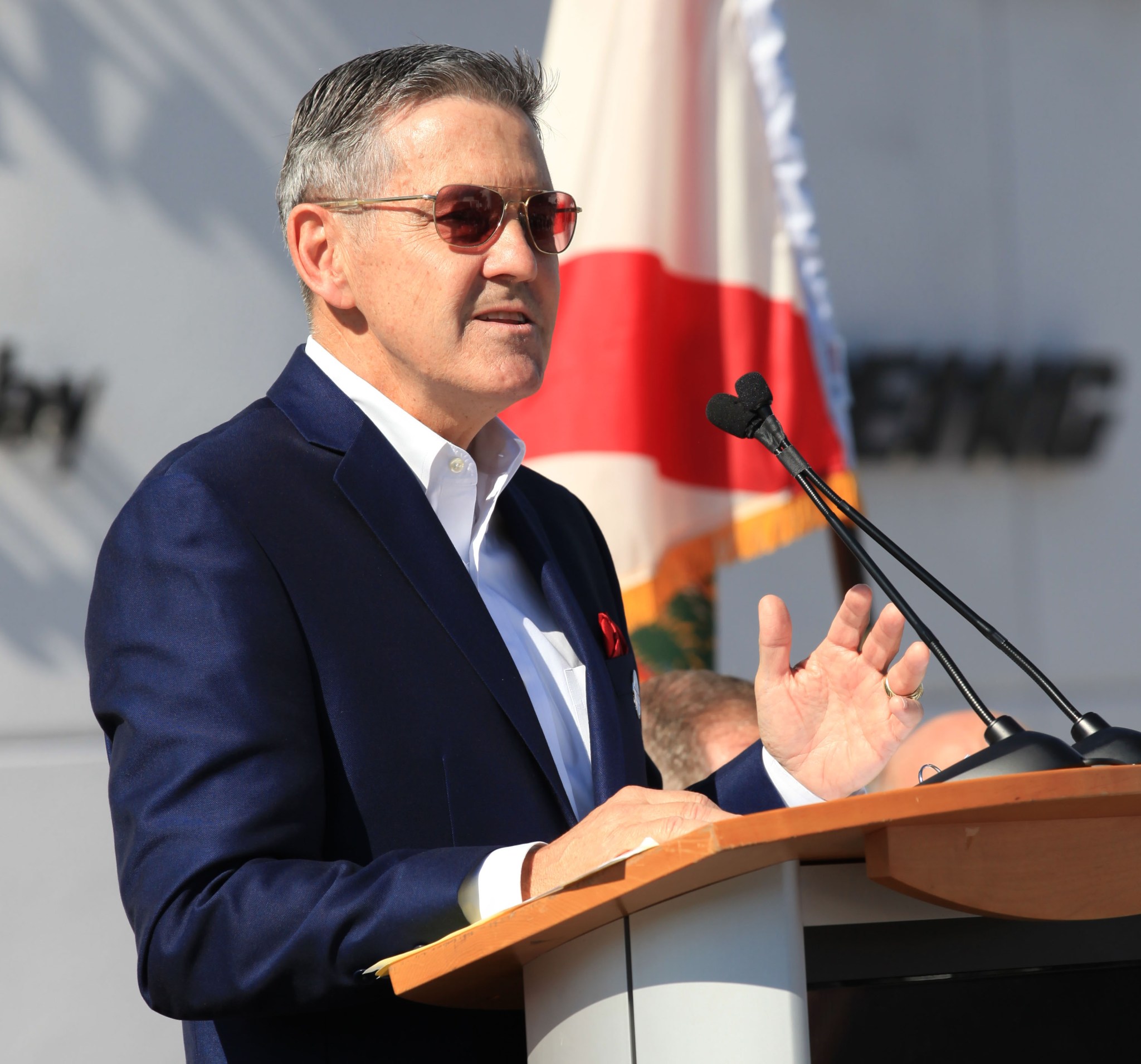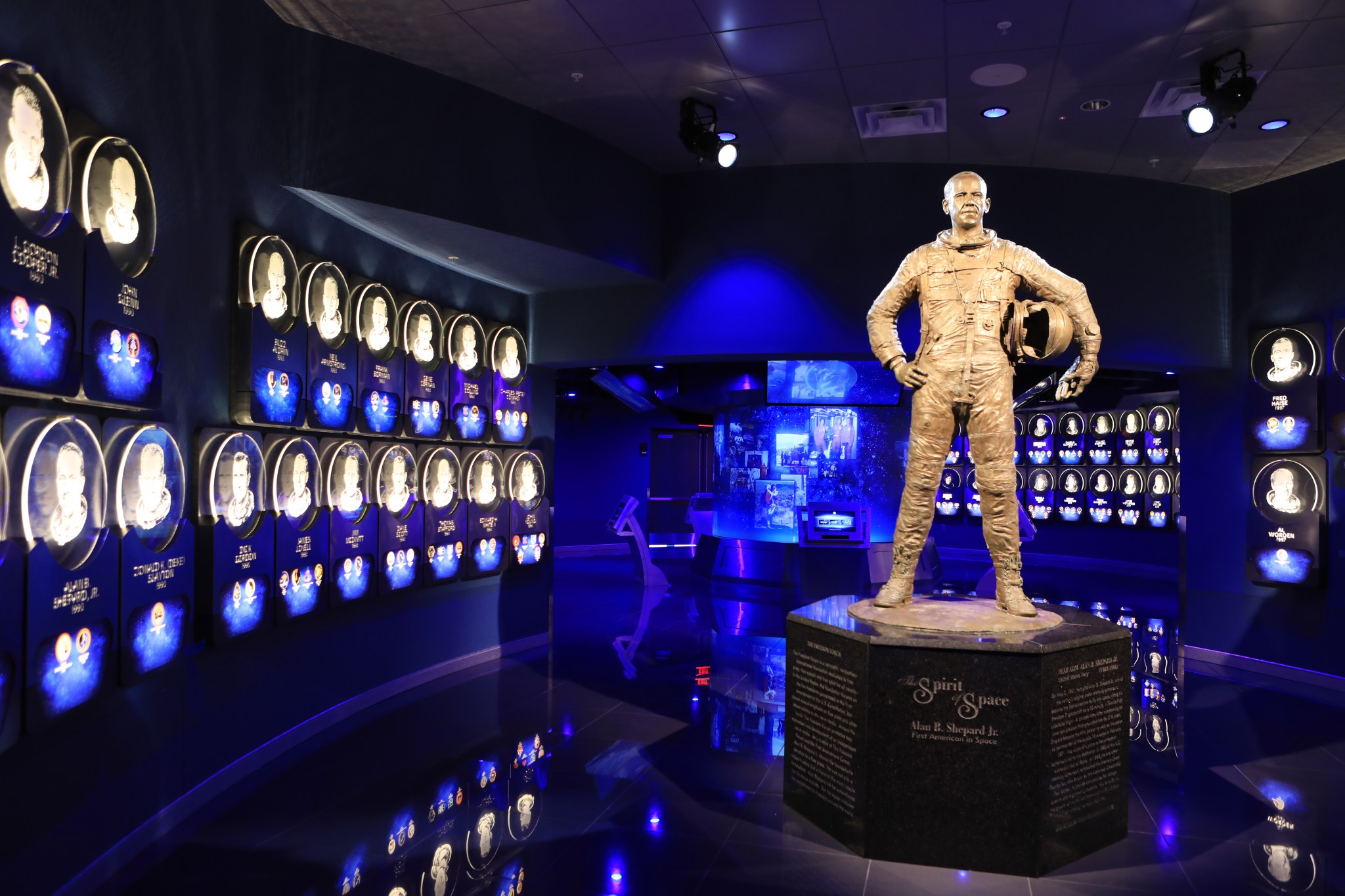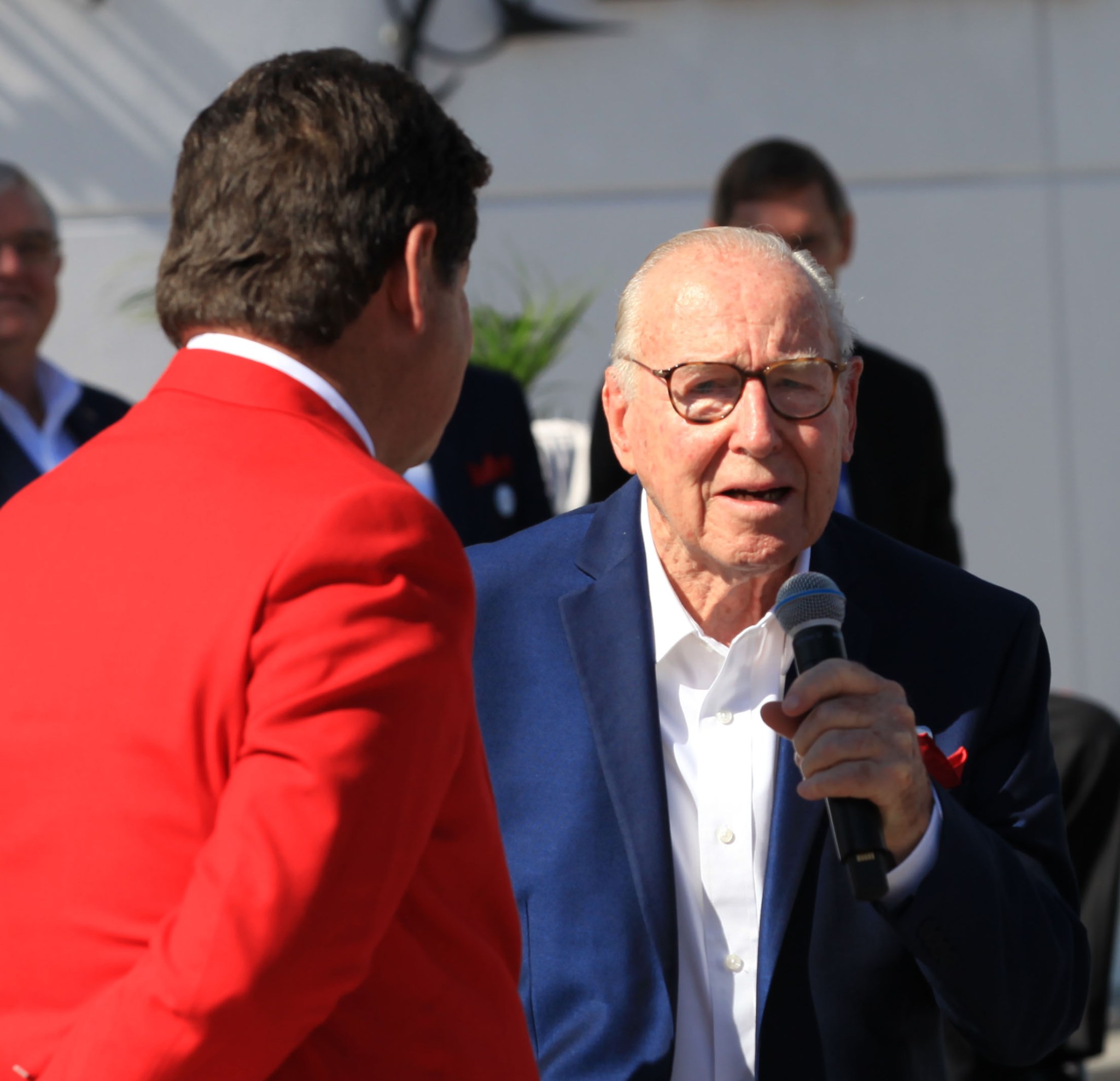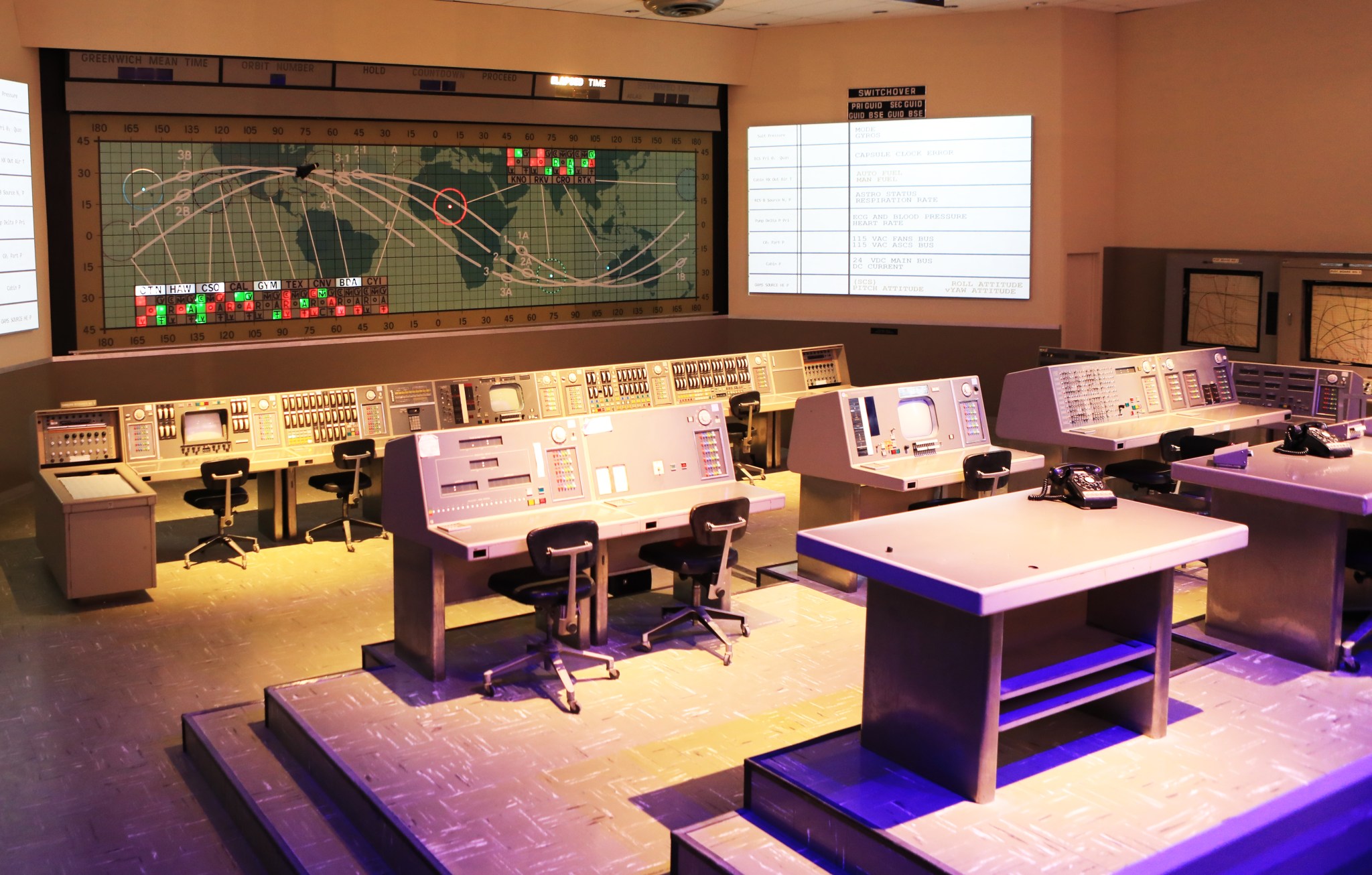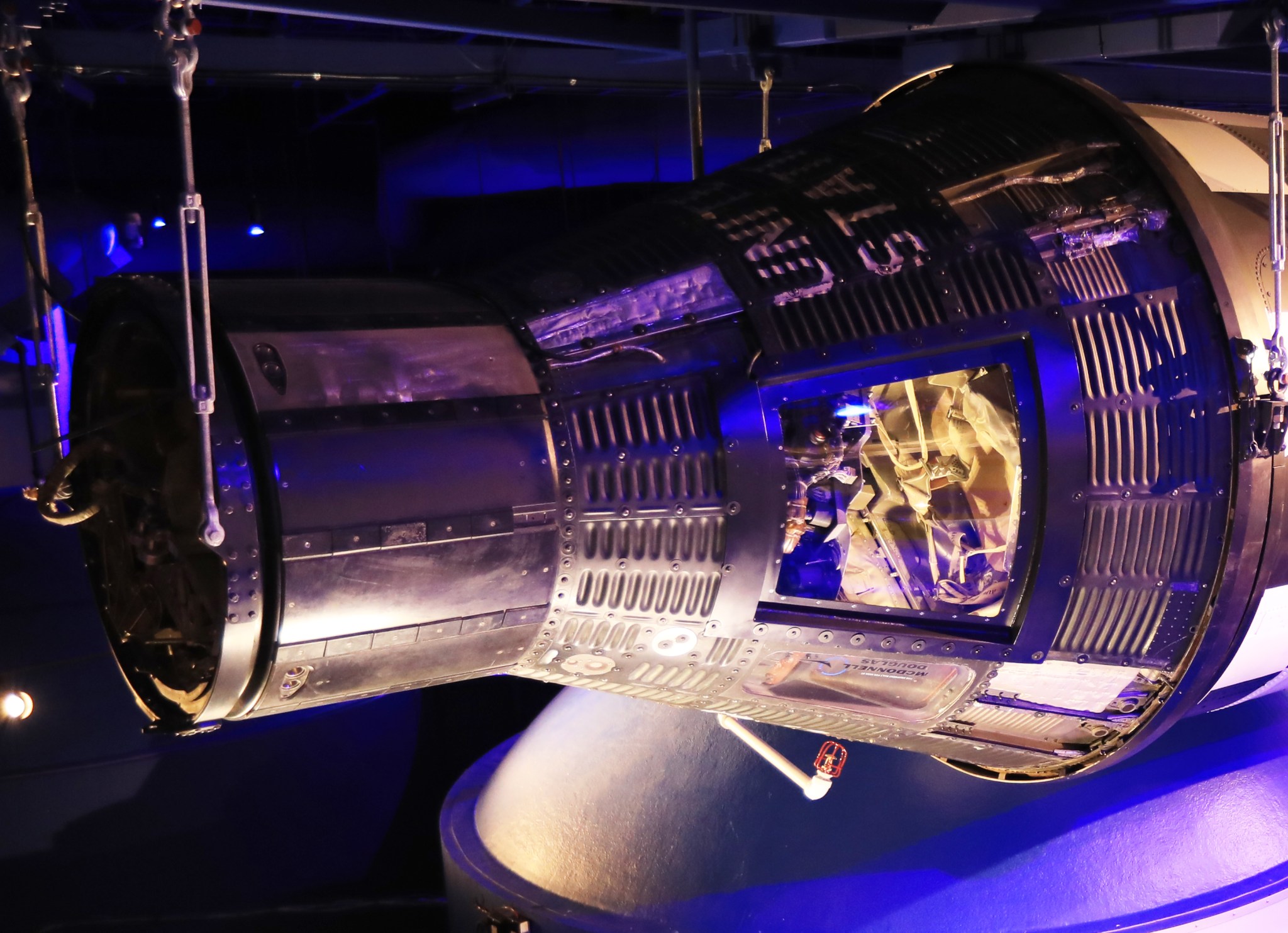“Liftoff of Discovery with a crew of six astronaut heroes and one American legend,” said launch commentator Lisa Malone of NASA Public Affairs as the space shuttle mission STS-95 flew into orbit on Oct. 29, 1998. While it was a flight in the late 1990s, it was reminiscent of NASA’s storied past. An international crew lifted off with John Glenn, a member of the Mercury program’s Original Seven astronauts.
In ceremonies on Nov. 11, 2016, the Kennedy Space Center Visitor Complex in Florida opened its doors to the Heroes and Legends attraction that includes the new home of the U.S. Astronaut Hall of Fame. In addition to displays honoring the 93 Americans currently enshrined in the hall, the facility looks back to the pioneering efforts of Mercury, Gemini and Apollo. It provides the background and context for space exploration and the legendary men and women who pioneered the nation’s journey into space.
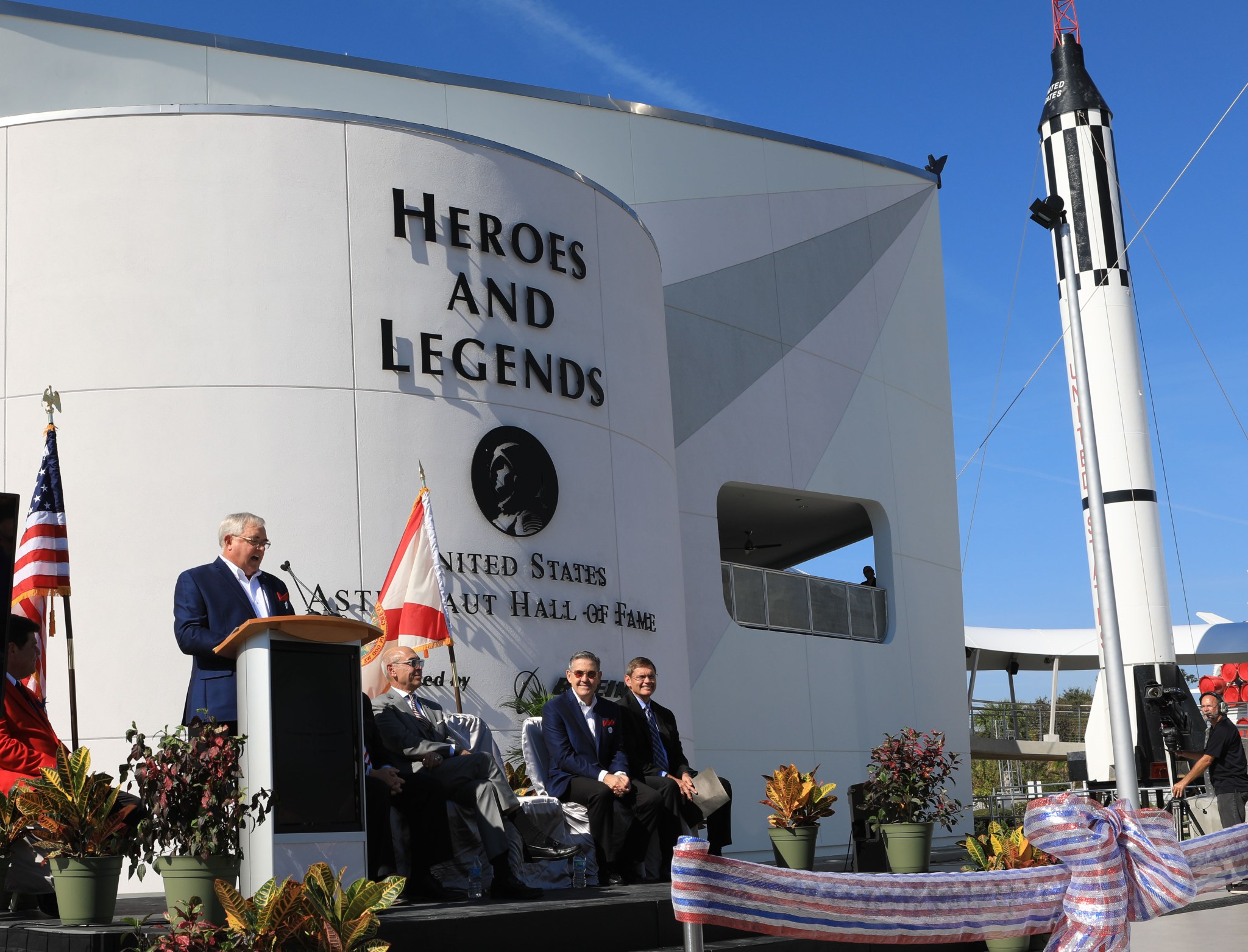
Kennedy Space Center Director Bob Cabana, a former space shuttle astronaut and member of the Astronaut Hall of Fame, noted that the new attraction will encourage a future generation of space explorers.
“I hope that all of you, when you get to see Heroes and Legends, you’re inspired,” he said. “The children today can see that there is so much more they can reach for if they apply themselves and do well.”
The visitor complex is operated by Delaware North Companies Parks and Resorts. According to Therrin Protze, the company’s chief operating officer of the Kennedy Space Center Visitor Complex, the Heroes and Legends attraction is just inside the entrance to set the stage as guests arrive.
“We’re focusing on a story to create what we consider a ‘launch pad’ for our visitors,” he said. “This is an opportunity to learn about the amazing attributes of our heroes behind the historical events that have shaped the way we look at space, the world and the future.
“We are grateful to NASA for allowing us to tell the NASA story to millions of guests from all over the world,” Protze said.
Cabana offered appreciation to those who made possible the new attraction, Heroes and Legends presented by Boeing.
“I want to personally thank Therrin Protze and Delaware North, as well as The Boeing Company,” Cabana said. “Both of these companies made this possible.”
Falcon’s Treehouse, an Orlando-based design firm, began construction on the 37,000-square-foot Heroes and Legends facility in the fall of 2015.
A sweeping ramp entrance is designed to simulate the journey to space. Once inside, a seven-minute presentation on the historic beginning of the space race acknowledges that the Cold War rivalry between the United States and the Soviet Union was the impetus for America’s push to the stars in NASA’s early years.
Since Alan Shepard became the first American in space in 1961, astronauts have been to the moon, deployed the Hubble Space Telescope, built the International Space Station and now are preparing for the Journey to Mars.
The Astronaut Hall of Fame exhibit is housed in a rotunda. It intimately connects visitors to each of the astronaut inductees through state-of-the-art interactive technology. A 365-degree video cylinder with five interactive kiosk stations provide access to stories about each of the Hall of Fame astronauts.
One element of the experience will provide guests an opportunity to capture a memento of their visit: a photo opportunity to pose with some of the featured heroes and legends.
The concept for a U.S. Astronaut Hall of Fame began in the 1980s with the six surviving Original Seven Mercury astronauts. Along with Gus Grissom’s widow, Betty Grissom, they envisioned a place where space travelers could be remembered — much like sports figures or rock ‘n roll stars. The hall of fame opened with induction of Mercury astronauts in May 1990. At the time, the facility was located in Titusville, Florida, just outside the Kennedy Space Center.
During a news conference at the opening of the original facility, Mercury astronaut Deke Slayton looked to the future.
“I like the fact that it will be a growing Hall of Fame,” he said. “It won’t be stagnant, confined just to the Original Seven astronauts. We want to have other astronauts honored and other names will be added.”
Grow it did. Gemini astronauts were added in March 1993 and Apollo era crews, including Skylab and Apollo-Soyuz, were inducted in October 1997. In the years to follow, astronauts have been welcomed from the space shuttle and space station eras.
Former space shuttle astronaut Dan Brandenstein, who is chairman of the Astronaut Scholarship Foundation board of directors, stated that those who developed the original hall of fame idea would be proud.
“I’m certain the new Heroes and Legends featuring the U.S. Astronaut Hall of Fame far surpasses anything they would have imagined,” he said.
When the original Astronaut Hall of Fame opened, Shepard noted that it included personal items from those who flew in space.
“We hope it will encourage youngsters to follow in our footsteps,” he said.
The new displays include even more memorabilia. The exhibit floor taps into holograms and interactive media to change the way visitors interact with astronaut memorabilia and space program artifacts.
Interactive features also include the original consoles of the Mercury Mission Control room with the world map that was used to follow the path of capsules between tracking stations. Also on display are the Sigma 7 Mercury spacecraft piloted by Wally Schirra during his six-orbit mission in October 1962 and the Gemini IX capsule flown by Tom Stafford and Gene Cernan for three days in June 1966.
A theater featuring a “four-dimensional,” multisensory experience allows guests to vicariously join four space-age NASA heroes on the most perilous stages of their adventures. Artistically choreographed with lighting and special effects, sound and surrounding images will create the sensation of being “in the moment” as guests overlook planet Earth.
A collection of nine exhibit modules describe the attributes of a hero – inspired, passionate, curious, tenacious, disciplined, courageous, principled and confident. These also help guests discover more about NASA’s astronauts as told through their own experiences.
For many astronauts, humility could be added to the list. Master of ceremonies and a former CNN space correspondent John Zarrella asked Gemini and Apollo astronaut Jim Lovell how it feels to be considered one of America’s heroes.
“I don’t consider myself a hero like say, Charles Lindbergh,” said Lovell, a member of the Astronaut Hall of Fame. “I just did what was proper and exciting — something for my country and my family. I guess I’m just a lucky guy.”
Protze stated that he hopes visitors to the Kennedy Visitor Complex and the new attraction will leave excited about NASA’s efforts to explore.
“This new attraction will be a phenomenal introduction,” Protze said. “We are here to inspire minds through a memorable space experience.”




























